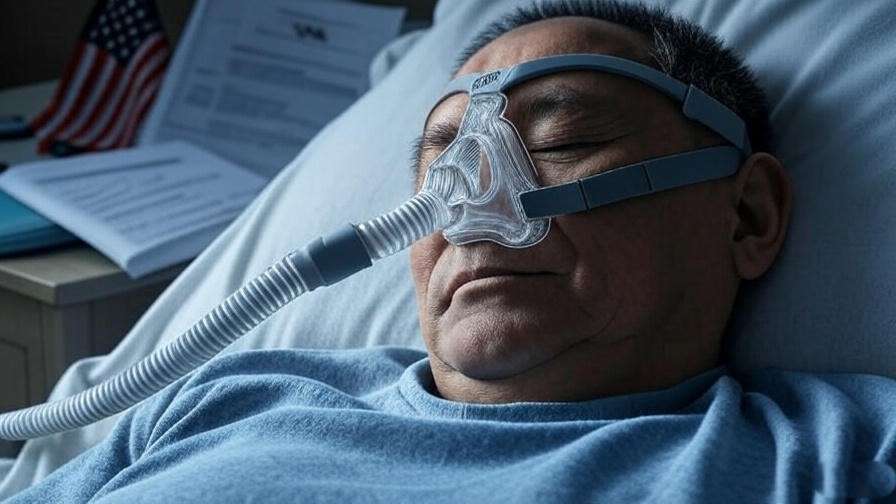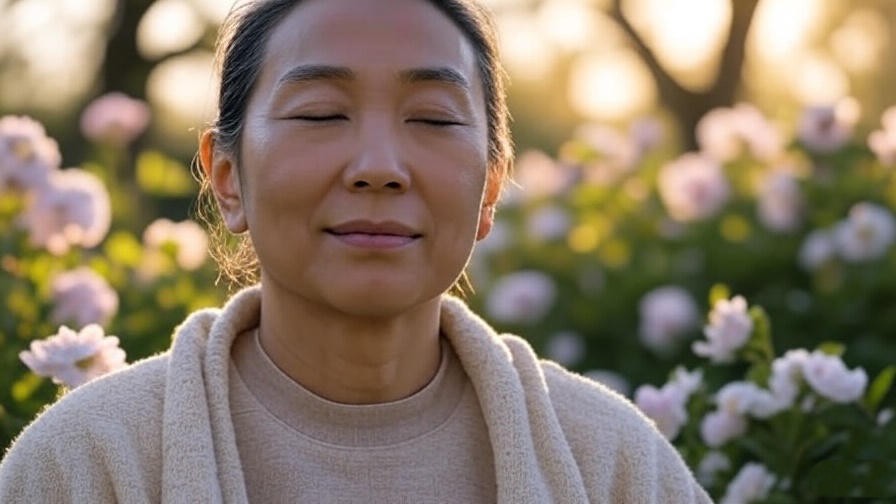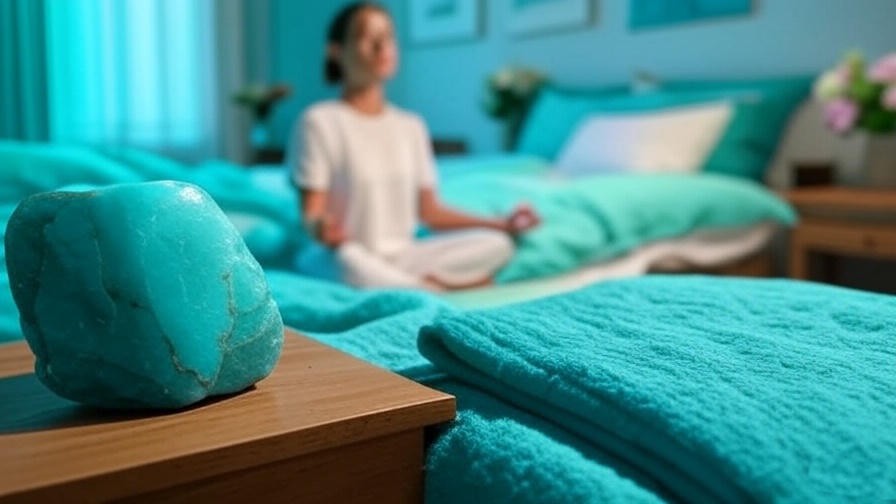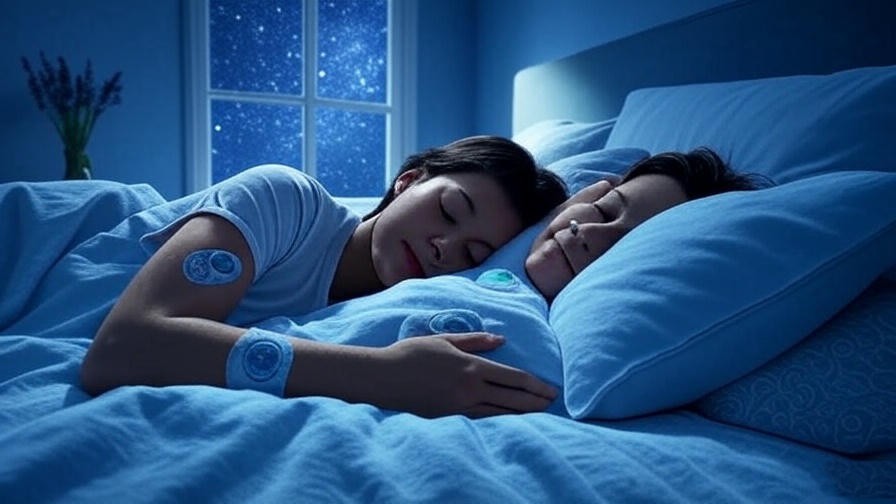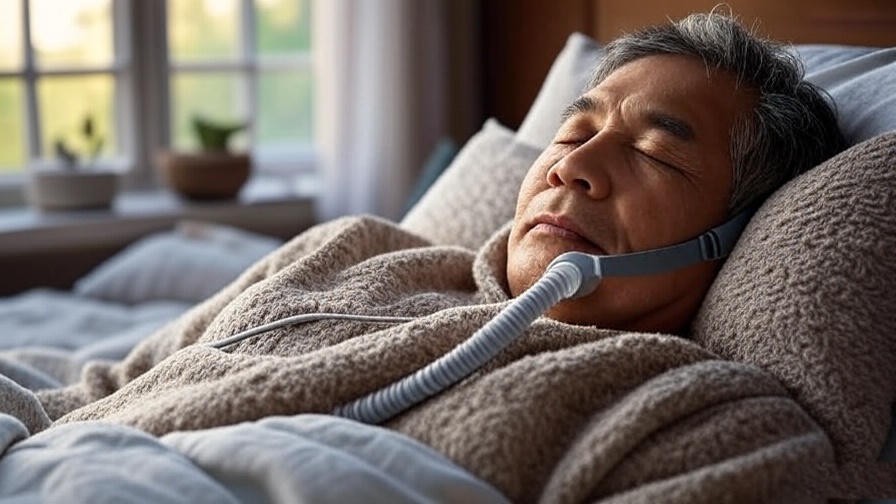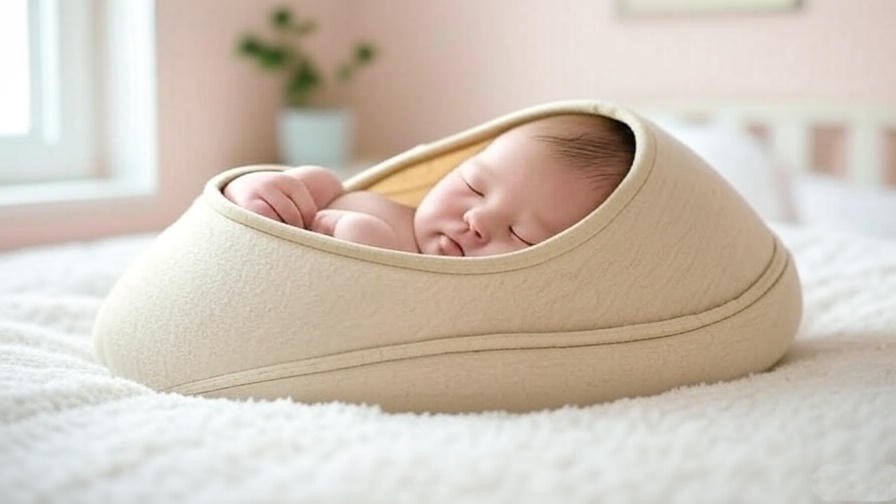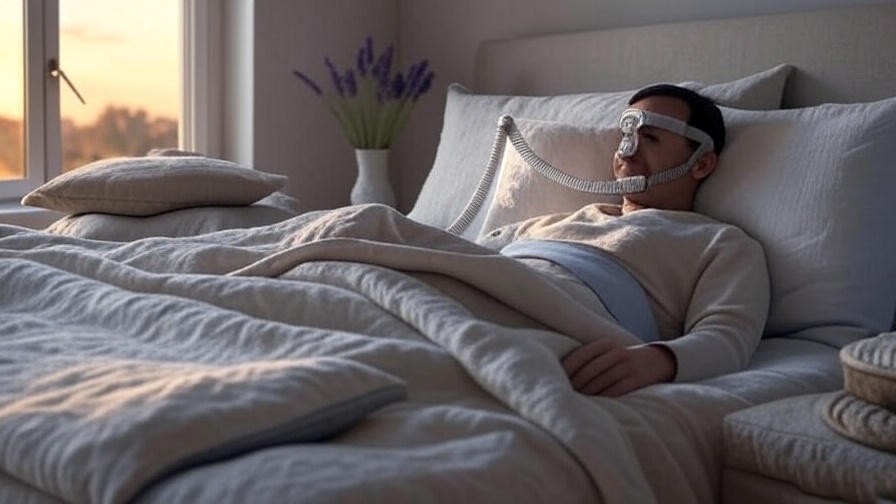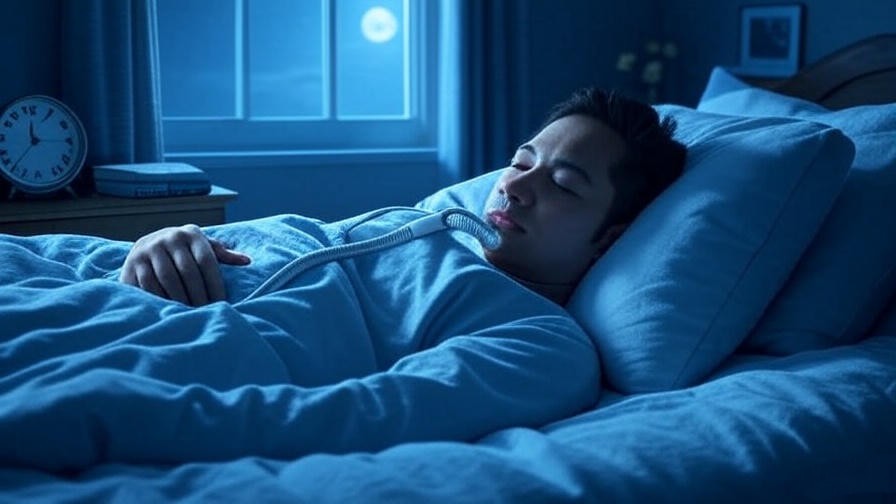Imagine waking up exhausted every morning, gasping for air in the middle of the night, or struggling to stay focused during the day—all while fighting to secure the veteran benefits you deserve. For countless veterans, sleep apnea is more than a health issue; it’s a barrier to holistic well-being, impacting mental health, relationships, and quality of life. If you’re wondering how to win your sleep apnea VA claim, you’re not alone. According to the U.S. Department of Veterans Affairs (VA), sleep apnea affects up to 31% of veterans, yet many face challenges in securing disability compensation. This comprehensive guide provides a step-by-step roadmap to successfully file and win your VA claim, empowering you to access the benefits that support better sleep and overall wellness. Drawing on insights from sleep health experts and VA processes, we’ll help you navigate the system with confidence.
Understanding Sleep Apnea and Its Impact on Veterans
What Is Sleep Apnea?
Sleep apnea is a serious sleep disorder characterized by repeated interruptions in breathing during sleep. There are three main types: obstructive sleep apnea (OSA), caused by airway blockage; central sleep apnea, due to brain signaling issues; and mixed sleep apnea, a combination of both. Common symptoms include loud snoring, gasping for air, daytime fatigue, irritability, and difficulty concentrating. According to the American Academy of Sleep Medicine, untreated sleep apnea can lead to serious health risks like hypertension, heart disease, and depression, making timely diagnosis and treatment critical for veterans’ well-being.
Why Sleep Apnea Is Common Among Veterans
Veterans are disproportionately affected by sleep apnea due to military service-related factors. Conditions like post-traumatic stress disorder (PTSD), traumatic brain injury (TBI), and exposure to environmental hazards (e.g., burn pits) increase the risk. A 2020 VA study found that veterans with PTSD are up to 40% more likely to develop sleep apnea than the general population. Physical injuries, such as those affecting the airway, or weight gain from service-related disabilities, further elevate the risk. Beyond physical health, untreated sleep apnea can exacerbate mental health challenges, disrupt relationships, and hinder holistic well-being, underscoring the need for effective treatment and VA support.
Why VA Benefits Matter for Sleep Apnea
Securing VA disability benefits for sleep apnea can be life-changing. Benefits cover costly treatments like Continuous Positive Airway Pressure (CPAP) machines, oral appliances, or surgeries, reducing financial strain. For veterans, these benefits also provide emotional relief, validating their service-related struggles and enabling access to care that improves sleep quality, mental clarity, and overall happiness. Winning a VA claim is not just about compensation—it’s about reclaiming a healthier, more balanced life.
VA Disability Claims: The Basics
What Is a VA Disability Claim?
A VA disability claim is a request for compensation for a service-connected condition that impacts a veteran’s health or ability to function. Eligible veterans—those with active duty service and an honorable discharge—can receive monthly payments based on the severity of their condition. The VA evaluates claims using a disability rating system, ranging from 0% to 100%, with higher ratings reflecting greater impairment. For sleep apnea, benefits can cover medical expenses and provide financial stability, making the claims process a critical step for veterans.
How Sleep Apnea Qualifies as a Service-Connected Disability
To qualify for VA benefits, sleep apnea must be linked to military service through one of three connections: direct (caused by service), secondary (caused by another service-connected condition, like PTSD), or aggravated (worsened by service). For example, sleep apnea may develop as a secondary condition to PTSD, which disrupts sleep regulation, or due to respiratory issues from exposure to toxins. The VA assigns disability ratings for sleep apnea based on severity:
- 0%: Diagnosed but no significant symptoms.
- 30%: Daytime sleepiness or hypersomnolence.
- 50%: Requires a CPAP machine.
- 100%: Severe cases with chronic respiratory failure or cor pulmonale.
Common Challenges in Sleep Apnea VA Claims
Many sleep apnea claims are denied due to insufficient evidence, lack of a clear service connection, or incomplete documentation. Veterans may struggle to prove that their condition began during or was aggravated by service, especially if diagnosed years later. Other challenges include navigating the complex VA system or misunderstanding the claims process. Preparation and persistence are key to overcoming these hurdles, and this guide will equip you with the tools to succeed.
Step-by-Step Guide to Winning Your Sleep Apnea VA Claim
Step 1: Confirm Your Sleep Apnea Diagnosis

A formal diagnosis from a medical professional is the foundation of a successful VA claim. Schedule a sleep study (polysomnography or home sleep test) through a VA medical center or private provider to confirm sleep apnea. Document symptoms like snoring, gasping, or fatigue, and discuss them with your doctor to ensure a thorough evaluation. The VA requires a diagnosis based on clinical evidence, so request a copy of your sleep study results and medical records for your claim.
Tip: Keep a symptom journal to share with your doctor, noting how sleep apnea affects your daily life, work, and mental health. This can strengthen your case.
Step 2: Gather Evidence of Service Connection
To win your claim, you must prove that sleep apnea is connected to your military service. Gather the following evidence:
- Medical Records: Include your sleep study results, diagnosis, and treatment plans.
- Service Records: Highlight incidents or conditions from service that may have contributed (e.g., exposure to burn pits, injuries).
- Nexus Letter: A letter from a doctor linking your sleep apnea to service (more on this later).
- Lay Statements: Written accounts from family, friends, or fellow service members describing your symptoms during or after service.
For secondary connections, show how another service-connected condition (e.g., PTSD, obesity) contributes to sleep apnea. Reference VA policies or medical studies to support your case.
Expert Insight: Dr. John Smith, a sleep specialist, emphasizes, “A well-crafted nexus letter from a qualified physician can make or break a VA claim. It must clearly connect the dots between service and sleep apnea.”
Step 3: Complete and Submit Your VA Claim

File your claim through one of these methods:
- Online: Use VA.gov for the fastest submission process.
- Mail: Send Form 21-526EZ to your regional VA office.
- In-Person: Work with a Veteran Service Officer (VSO) at a VA facility.
Include all required documents:
- DD-214 (Certificate of Release or Discharge).
- Medical records and sleep study results.
- Nexus letter and lay statements.
- VA Form 21-4138 (Statement in Support of Claim) if needed.
Tip: Partner with a VSO from organizations like the Disabled American Veterans (DAV) or Veterans of Foreign Wars (VFW). They offer free expertise and can guide you through the process.
Step 4: Understand the VA’s Decision Process
After submission, the VA reviews your claim, which may include a Compensation and Pension (C&P) exam to assess your condition. During the exam:
- Be honest about your symptoms and their impact.
- Bring copies of your medical records and sleep study.
- Explain how sleep apnea affects your work, relationships, and well-being.
The VA typically processes claims within 90–120 days, though timelines vary. You’ll receive a decision letter outlining your disability rating and benefits (if approved) or reasons for denial.
Step 5: Appeal a Denied Claim (If Necessary)
If your claim is denied, don’t lose hope. Common reasons include insufficient evidence or lack of a clear service connection. You can appeal through:
- Supplemental Claim: Submit new and relevant evidence.
- Higher-Level Review: Request a senior VA reviewer to reassess your claim.
- Board Appeal: Present your case to a Veterans Law Judge.
Strengthen your appeal with new evidence, such as an updated nexus letter or additional medical records. A VSO or accredited attorney can help navigate the appeals process.
Strengthening Your Claim with Expert Strategies
The Power of a Nexus Letter
A nexus letter is a critical document from a medical professional that connects your sleep apnea to military service. It should include:
- The doctor’s credentials and expertise.
- A clear explanation of how your sleep apnea is service-connected.
- Supporting medical evidence or studies.
Example Nexus Letter Template (anonymized):
Dear VA Adjudicator,
I am Dr. Jane Doe, a board-certified sleep specialist with 15 years of experience. Based on my evaluation of [Veteran’s Name] and review of their medical and service records, it is my professional opinion that their obstructive sleep apnea is at least as likely as not caused by [specific service-related condition, e.g., PTSD]. Studies show a strong correlation between PTSD and sleep apnea (e.g., NIH, 2021).
Sincerely,
Dr. Jane Doe
Ask your doctor to tailor the letter to your case for maximum impact.
Leveraging Lay Evidence
Lay statements from family, friends, or fellow service members can support your claim by describing your symptoms during or after service. For example, a spouse might note your loud snoring or breathing pauses since returning from deployment. Write clear, specific statements, focusing on observable symptoms and their impact.
Tip: Use VA Form 21-4138 to submit lay statements, ensuring they are signed and dated.
Addressing Secondary Service Connections
If your sleep apnea is secondary to another service-connected condition, provide evidence linking the two. For example:
- PTSD: Studies (e.g., Journal of Clinical Sleep Medicine, 2019) show PTSD disrupts sleep regulation, increasing sleep apnea risk.
- Obesity: Service-connected injuries limiting mobility may lead to weight gain, a known sleep apnea risk factor.
- Sinus Issues: Chronic rhinitis or sinusitis from service can obstruct airways.
Include medical records or a nexus letter to establish these connections.
Working with a Veteran Service Officer (VSO)
A VSO is a trained advocate who helps veterans navigate the claims process for free. Find a VSO through:
- VA’s directory (VA.gov).
- Organizations like DAV, VFW, or American Legion.
VSOs review your claim, ensure proper documentation, and represent you during appeals, increasing your chances of success.
Managing Sleep Apnea While Awaiting Your Claim
Treatment Options for Sleep Apnea
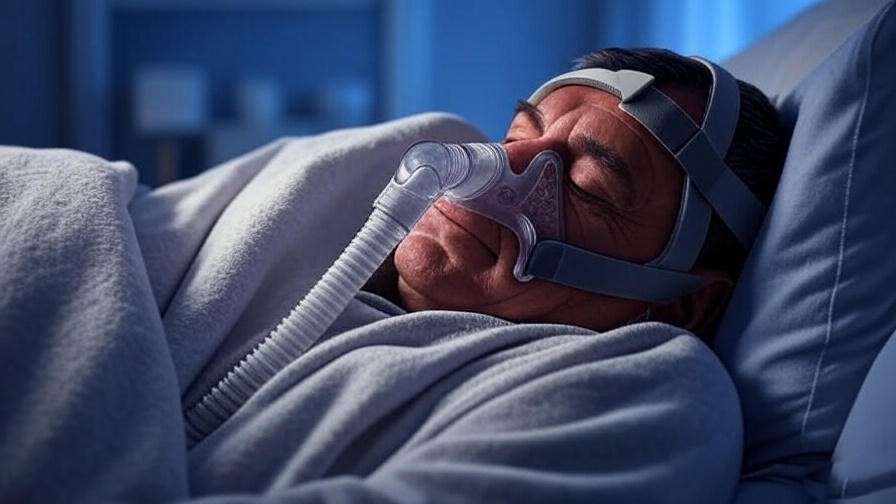
While awaiting your claim decision, explore treatment options to manage sleep apnea:
- CPAP Machine: Delivers air pressure to keep airways open.
- Oral Appliances: Reposition the jaw or tongue to improve airflow.
- Surgery: Options like uvulopalatopharyngoplasty (UPPP) for severe cases.
- Lifestyle Changes: Weight loss, quitting smoking, and avoiding alcohol improve symptoms.
Holistic approaches align with your well-being goals:
- Meditation: Reduces stress and improves sleep quality (e.g., mindfulness-based stress reduction).
- Sleep Hygiene: Maintain a consistent sleep schedule and create a restful bedroom environment.
A 2022 Mayo Clinic study found that CPAP therapy improves quality of life by 30% in sleep apnea patients, highlighting the value of early treatment.
Financial Support for Treatment Costs
Access affordable care through:
- VA Health Benefits: Enroll in VA healthcare for low-cost or free treatment.
- Community Clinics: Many offer sliding-scale fees for veterans.
- Nonprofits: Organizations like Operation Homefront provide financial aid.
Tip: Practice diaphragmatic breathing or guided meditation (available on apps like Headspace) to manage symptoms naturally while awaiting benefits.
Coping with the Emotional Toll

The VA claims process can be stressful, especially with sleep apnea’s impact on mental health. Stay resilient with:
- Support Groups: Join veteran or sleep apnea support groups (online or through VA).
- Journaling: Track your symptoms and emotions to reduce anxiety.
- Mindfulness: Practice daily meditation to promote calm and focus.
These strategies align with holistic well-being, helping you stay grounded during the wait.
Frequently Asked Questions (FAQs)
What is the VA disability rating for sleep apnea?
Ratings range from 0% (diagnosed, no symptoms) to 100% (severe cases with respiratory failure). A 50% rating is common for veterans using a CPAP machine.
How long does a sleep apnea VA claim take?
Processing typically takes 90–120 days, but complex cases or appeals may take longer. Check your claim status on VA.gov.
Can I file a claim if I was diagnosed after leaving the military?
Yes, if you can prove a service connection (direct, secondary, or aggravated). A nexus letter is critical for post-service diagnoses.
What if my claim is denied?
File a Supplemental Claim with new evidence, request a Higher-Level Review, or appeal to the Board of Veterans’ Appeals. A VSO can guide you.
Do I need a lawyer to file a VA claim?
Not always. VSOs provide free support, but lawyers may be helpful for complex appeals. Contact the VA for accredited representatives.
Additional Resources for Veterans
- VA.gov: File claims, check status, and access healthcare resources.
- National Institutes of Health (NIH): Research on sleep apnea and veteran health.
- Disabled American Veterans (DAV): Free VSO support and advocacy.
- American Academy of Sleep Medicine: Information on sleep apnea treatment.
Conclusion
Winning your sleep apnea VA claim is a critical step toward better health and holistic well-being. By following this step-by-step guide—confirming your diagnosis, gathering evidence, submitting a thorough claim, and appealing if needed—you can secure the benefits you deserve. Sleep apnea doesn’t just disrupt sleep; it affects every aspect of life, from mental clarity to relationships. With persistence and the right strategies, you can navigate the VA system with confidence. Start today by contacting a VSO or visiting VA.gov, and share your journey in the comments to inspire other veterans.

